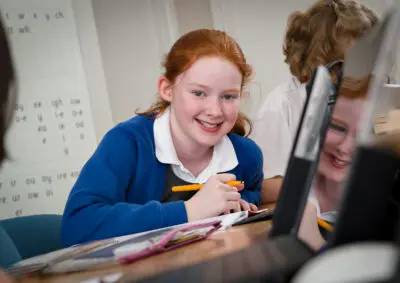Addressing one of the hidden costs of the pandemic – children’s speech and language development
Sarah Abad Murillo, Primary Lead, GL Assessment
Published
No one who works in schools is under any illusion about the disruption the pandemic has wrought on children’s education. Every child has suffered to some extent but the youngest and the most disadvantaged have been particularly affected.
Schools have performed brilliantly in incredibly challenging circumstances. But so many issues have had to be addressed – student mental health, classroom skills, literacy and numeracy catch-up, staff shortages and illness – that it’s understandable if some problems, particularly if they are easily mistaken for something else, are missed. Speech and language development is one of them.
Almost a year ago, the Education Endowment Foundation published a report, The Impact of Covid-19 on School Starters, that warned that speech and language development in young children starting school was a cause for growing concern. Of the 57 primary schools that took part in the study, 96% said they were worried about communication and language development. This is a crucial area of a child’s early education because so much – literacy, the ability to socialise, to rationalise and control emotions – depends on it. Without good speech and language skills, children will inevitably struggle.
Dealing with the aftermath of lockdown
A year later, and two years since the pandemic began, those problems will have only intensified. Children have not been allowed to play and socialise unhindered and so haven’t been able to pick up the vocabulary and language skills they would have acquired normally, while continued Covid disruption has made it difficult for teachers to assess children or put in place interventions.
To be clear, impaired speech and language development isn’t only a problem for children just starting school, it has blighted older year groups too. And whereas pre-pandemic it tended to affect a finite number of children, so many pupils have had to live with restrictions that a much wider cohort is struggling now. An additional complicating factor is the lack of specialised support available to schools. A combination of funding cuts and Covid has meant external expertise and support is non-existent.
Helping schools rectify the problem
What then should schools do? They have to act quickly. With so much to cope with in the aftermath of the pandemic, with teachers being pulled in different directions and workload a constant issue, a term can be over before you know it. A shy or withdrawn child may be taking time to settle in – but it could be an indication of more deep-rooted issues. Language develops at a rapid rate in very young children. Without early identification the gap between children with difficulties and their peers can quickly widen and they will be playing catch-up long afterwards.
Fortunately, there is a simple solution: use a speech and language screener for all children at the start of term. GL Assessment’s WellComm Primary for pupils 6 to 11 years, for instance, is a complete speech and language toolkit that not only allows for quick and effective screening but also comes with teaching aids and ready-made interventions. No specialist training is required, and it is quick and easy to administer. It allows schools to take charge of the assessment rather than wait for specialist external help that may be a long time arriving – or simply non-existent.
Few educators would deny that speech and language skills are essential foundations for successful learning – and it’s undeniable that serial lockdowns have severely disrupted many children’s speech and language development. But there are accessible tools that can help you identify speech and language concerns, pinpoint where children are struggling, and, ultimately, provide more children with the help they need.


